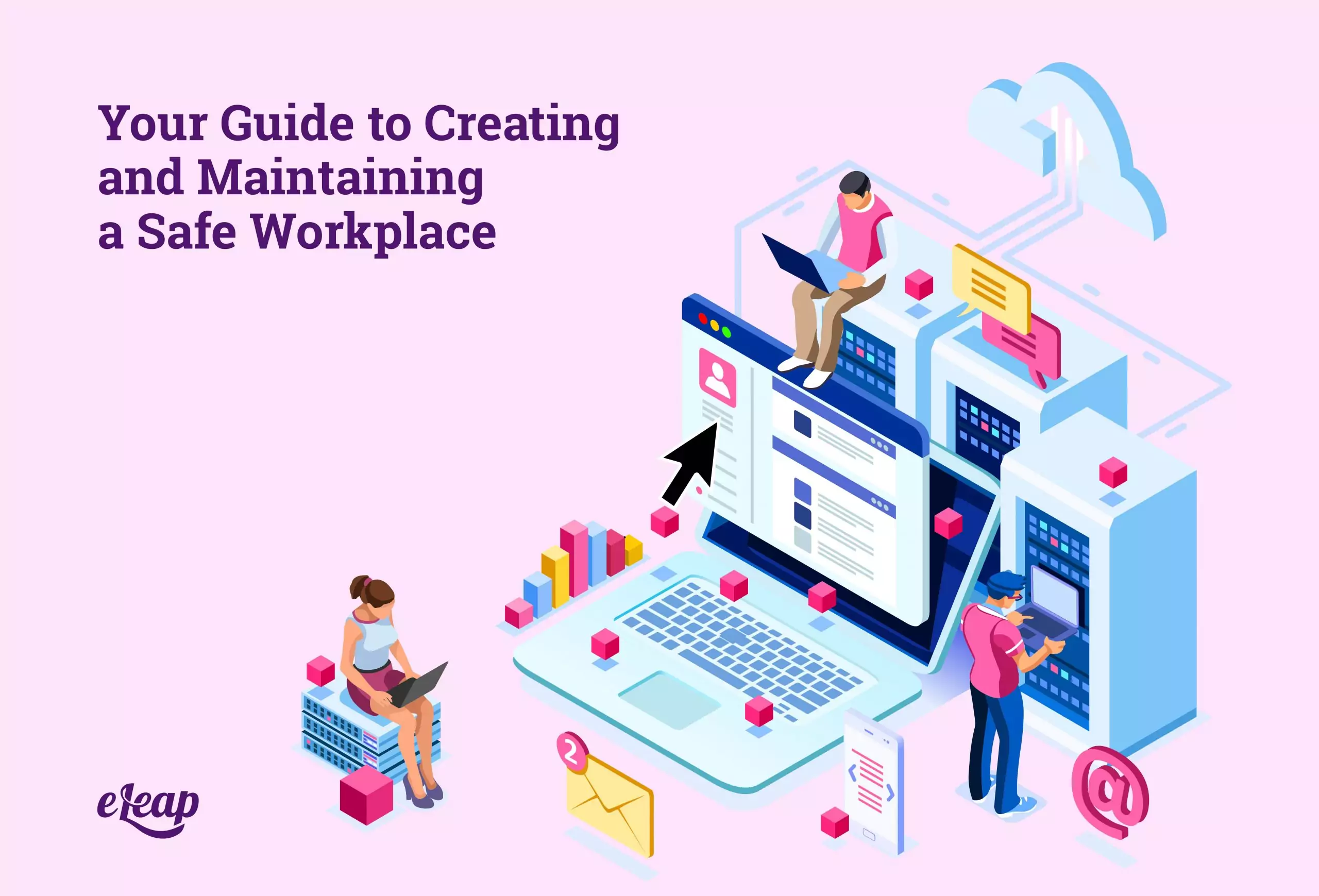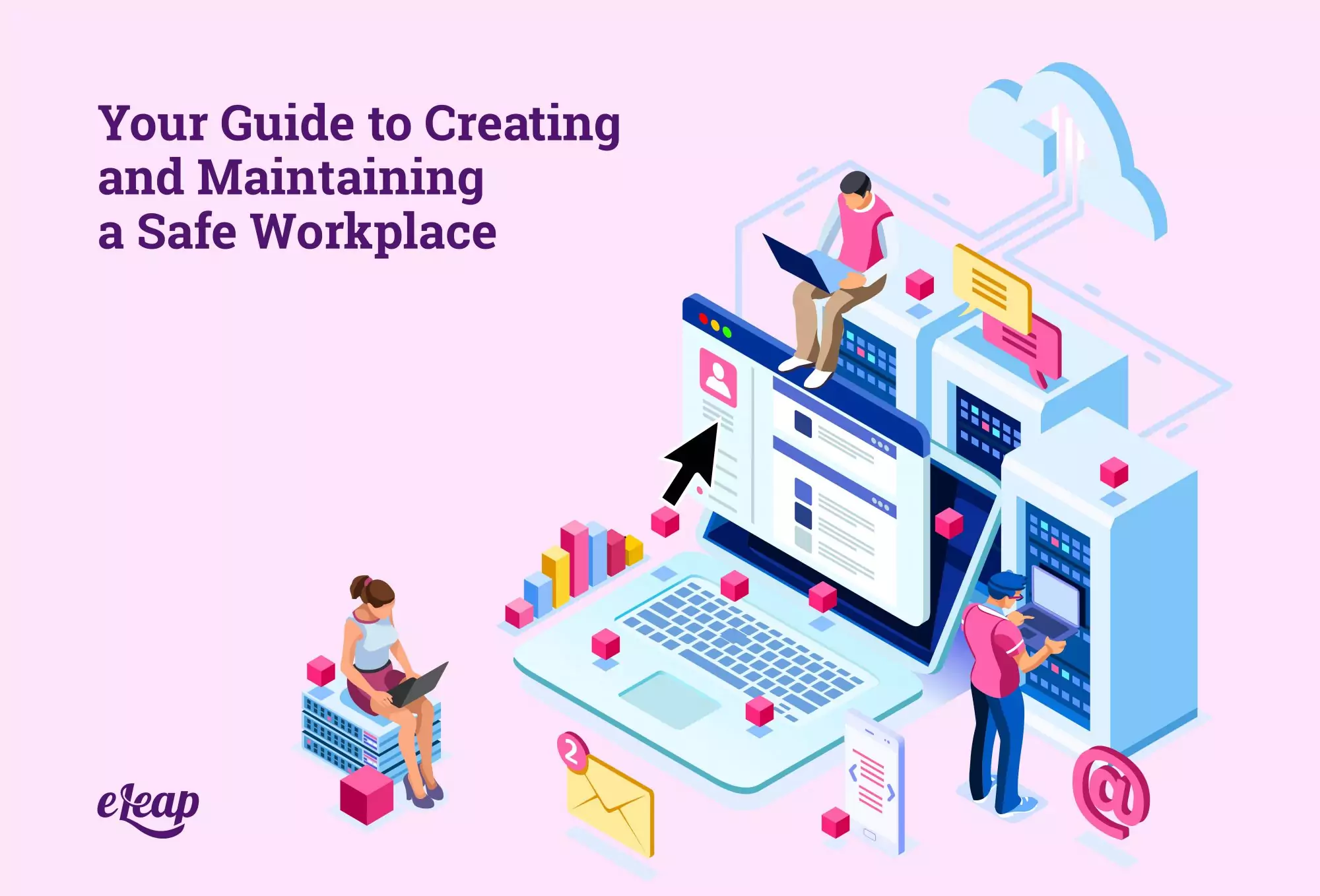Your Guide to Creating and Maintaining a Safe Workplace

A safe workplace will always ensure the success of an organization. Workplace safety is a critical consideration, whether you run a warehouse or operate within an office building. Creating a safe workplace can be challenging, though. It requires the right combination of training, awareness, and strategy.
With that being said, it is not an insurmountable challenge. In fact, some simple steps and tips can help you on your way. Below, we’ll cover what you need to know to start changing the situation to create and maintain a safe workplace.

Begin with Training
The single most important thing you must do is train your employees. Safety-related training is critical for employees at all levels, from receptionists to warehouse workers. However, some thought needs to be given to the relevance of different training options to the employee’s role within the organization. For instance, the safe operation of a pallet jack is not likely to be something that the head of accounting really needs to know, although it can be beneficial.
What must be done here to take a deep dive into your organization’s structure. Map training needs to job duties, but also to particular exposures each employee has within the business. For instance, an employee might not ever be required to use cleaning chemicals, but if they must access the storage locker where those are stored for some other need, then they should be provided with relevant safety training in case of a chemical spill or another risk.
Once you have mapped training to positions and risk exposure, you can then create personalized training plans. These will walk each employee through a customized learning path, culminating with the knowledge that your team members need to protect their own safety, as well as that of others. Click here to download free 8 Safety Blind Spots eBook.
If You See Something, Say Something
Another important tip for creating a safe workplace and then maintaining is to implement an “if you see something, say something” policy. In a nutshell, this sort of policy encourages all employees to alert higher-ups if they spot an unsafe situation, following improper practices, or other risky behavior. It essentially transforms the entire organization, empowering everyone to take immediate action to safeguard themselves and others.
As a note, this sort of policy should also be covered in your training. It works best as a separate module supplementing your overall safety training, too. Do not relegate it to a footnote – it is simply too important that everyone realizes they have a role to play in safety for the entire organization.
Make It Easy to Report
Just because you have an “if you see something, say something” policy doesn’t mean that it is easy for your employees to act. Make it easy for them to report safety violations, concerns, and unsafe actions. Employees should be able to do this in person, by phone, email, or even social media. The more channels you have open, the better it is to obtain a safe workplace.
Reward Employees for Smart Safety Actions
Providing robust safety training for your employees is not enough to make a deep, lasting change. If you really want to embed safety awareness in your company’s culture, you need to offer something a bit more tangible – rewards and recognition for those employees who regularly go above and beyond, who make smart safety decisions, and more.
For instance, if someone alerts the organization to a potentially dangerous situation (following the “if you see something, say something” model explained above), recognize that individual’s contribution. Go farther than saying “good job”, though. Connect the dots for the employee, as well as for the rest of the organization. What was the situation? How did it come about? What might have happened had the employee not acted?
You can also tie these efforts into other motivating factors. One example is a monetary bonus for those who report safety issues or those who go for long periods without accidents. However, don’t limit yourself to monetary incentives only – anything that has value to your employees can work very well here.
Labels and Signage Matter
One of the most critical aspects of workplace safety is awareness. While training is key, labels and signage are also very important. These work in tandem with training – the sign alerts an employee to a particular threat, and because that employee has safety training, they know what do to in that situation.
Labels and signs must be clear and highly visible. Design is an important consideration here – bright colors and large, easy-to-read fonts are important. Don’t clutter the design with unnecessary symbols, graphics, or text, either. Clarity of communication is the sole purpose of safety signs and labels.
Form a Committee
Every organization should have a safety committee. That committee should have of several key people, including:
- A C-suite champion
- A mid-level manager
- Team leaders
- Individuals from different departments
The safety committee should be responsible for many different things, including reviewing injury and accident reports, conducting walks around and inspections, conducting safety and health analyses to identify potential problems, and more. In your drive to create and maintain a safe workplace, your safety committee is one of the front lines of defense.
Hold Safety-Related Meetings
Finally, make sure that you keep safety at the forefront with regular meetings. You should mention safety during company-wide meetings, as well as team meetings, but you should consider also having safety-specific meetings when possible. So, sometimes safety information is best presented within other meetings and events. It is to ensure that it can be shared with as many people as possible.
Here’s to Your Safety
Workplace safety is everyone’s responsibility. The information presented above should go a long way toward helping you create and maintain a safe workplace not just through education and training, but by empowering your employees to take their safety seriously. With that, training is of vital importance. Make sure your learning management system is up to date, flexible, and capable of providing the experience that modern learners demand and deserve. If it’s time for a change, contact us at eLeaP.